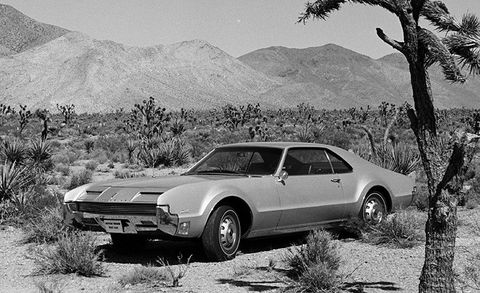Animated Car Images Front View
From the December 2017 issue
If engineers had had their way, front-wheel drive would have dominated automotive design from the beginning. But, in a victory for right-brain thinkers, stylists and enthusiasts actually have a say in the car-development process. Few can deny, though, that eliminating the large, heavy, costly, and inefficient rotating parts driving the rear wheels comes with numerous benefits. Namely, it frees up interior seating and cargo room and, in the case of transverse engines, provides more crush space between the front of the car and its occupants. And without a long driveshaft, rear axle (or axles), or rear differential, the car carries less mass; this, coupled with reduced driveline loss, aids efficiency. Also, front-drive construction puts the heaviest components of the machine over the tires driving it, increasing traction on slippery surfaces.
Despite its many advantages, however, front-wheel drive didn't truly gain traction (yes, we did that) until Congress enacted the Energy Policy and Conservation Act of 1975, putting in place the first CAFE standards. Smaller four-cylinder engines were not only more fuel efficient, they were also compact enough to be easily turned sideways, coupled to a transaxle, and made to drive the front wheels, laying the groundwork for the space-efficient packaging that dominates today's automotive landscape.
Transverse Engine: Pivoting the engine 90 degrees (from north-south to east-west) can increase crush space under the hood, allow the passenger compartment to move closer to the front wheels, and put weight over the tires driving the car, which aids in low-grip driving.
Transaxle: Transfers torque from the engine to the front wheels and houses the differential and transmission in one unit.
Floor: No driveshaft, differential, or rear axle typically means a lower and flatter floor, freeing up space for passengers and cargo.
Front-Wheel-Drive Milestones
• 1929 Cord L29: First front-drive car sold in the U.S.

HERITAGE IMAGES/GETTY IMAGES, LEON NEAL/GETTY IMAGES, THE ENTHUSIAST NETWORK/GETTY IMAGES
• 1934 Citroën 7CV: Combines front-drive and unibody construction.
• 1949 Citroën 2CV: Arguably the car that first delivers front-drive benefits to the masses. The Deux Chevaux remains in production until 1990, exceeding 5 million examples.
• 1959 Morris Mini Minor: Drafts the packaging template for modern front-drivers by mounting a transverse, water-cooled four-cylinder under its hood.

HERITAGE IMAGES/GETTY IMAGES, LEON NEAL/GETTY IMAGES, THE ENTHUSIAST NETWORK/GETTY IMAGES
• 1966 Oldsmobile Toronado: GM's first real attempt at front-wheel drive has a V-8 and becomes the first production car to demonstrate that front-drivers could be both large and alluring. Says C/D in November 1965: "The Toronado . . . may finally break down the orthodoxy and conformity that have gripped this country's auto industry since they gave up on steam."

HERITAGE IMAGES/GETTY IMAGES, LEON NEAL/GETTY IMAGES, THE ENTHUSIAST NETWORK/GETTY IMAGES
• 1973 Honda Civic and 1975 Volkswagen Rabbit: Both employ the most popular front-drive packaging still in use today, with a transaxle bolted to the end of a transversely mounted four-cylinder.
This content is created and maintained by a third party, and imported onto this page to help users provide their email addresses. You may be able to find more information about this and similar content at piano.io
Animated Car Images Front View
Source: https://www.caranddriver.com/features/a14988918/the-advantages-of-front-wheel-drive-for-cars-feature/
0 Response to "Animated Car Images Front View"
Post a Comment